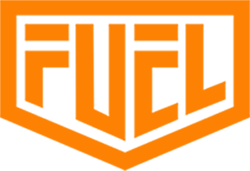FREQUENTLY ASKED QUESTIONS

FREQUENTLY ASKED QUESTIONS
| Question | Answer |
|---|---|
|
I’m interested in selling Fuel Helmets in my retail store. Who should I contact? |
info@fuelhelmets.com |
|
I’m a racer interested in getting a sponsorship from Fuel. Who is my contact? |
info@fuelhelmets.com |
|
There are three common helmet performance standards: DOT, ECE 22.05 and Snell. Can you explain? |
Federal Motor Vehicle Safety Standard 218 is commonly known as the DOT helmet standard, which establishes the minimum performance requirements for helmets used by motorcyclists and other motor vehicle users. It is applicable to helmets sold in the U.S. for on-road use. The purpose is to reduce deaths and injuries resulting from head impacts. |
|
ECE stands for “Economic Commission for Europe,” which was created under a United Nations agreement. The ECE standard, which is accepted in 47 countries, is similar to the DOT standard. |
|
|
Snell Memorial Foundation is a private, non-profit organization formed in 1957 dedicated to improving helmet safety. Snell goes beyond the governmental standard-setting approach and is available to assist manufacturers with helmet development by offering prototype testing. |
|
| How long will my helmet last? |
Fuel recommends, at the minimum, changing helmets every 3 to 5 years. The Snell Foundation recommends every 5 years, saying glues, resins and other materials used in helmet production can affect liner materials. Hair oils, body fluids and cosmetics, as well as normal wear all contribute to degradation. Petroleum-based products present in cleaners, paints, fuels and other commonly encountered materials may also degrade materials used in helmets. There will be a noticeable improvement in the protection of the helmet over a 5-year period, Snell notes, thanks to advances in materials, designs, production methods and standards. Although Fuel uses the best materials available, there are reasons when a helmet must immediately be replaced. They include: |
|
|
|
|
|
|
|
If you have questions or are not sure if your helmet needs to be replaced, contact info@fuelhelmets.com for more information. |
|
|
How can I get a copy of the Fuel Helmet Catalog? |
It is easily downloaded from the products page on this website. |
| How do I care for my helmet? | Use only approved methods to clean your Fuel helmet to avoid damage to the helmet shell or lining. Cleaning methods are based on the type of helmet you own. |
|
Fuel recommends cleaning a helmet with a glossy finish with products designed go automotive cleaning and polishing since all Fuel helmets are finished with an automotive-type base coat / clear coat finish. Make sure to carefully follow product instructions. Rubbing compounds can be used to deep clean to remove many scratches and scuffs. Over polishing with rubbing compounds can cause light abrasions that can dull the finish of your helmet. |
|
|
For our flat-finish helmets, we recommend using warm water and mild soap. Use multiple treatments for heavier dirt. Do not use excessive pressure, which can cause a glossy effect to be created and ruin the flat finish appearance. |
|
|
To remove adhesive residue from stickers or decals, use alcohol swabs. Wipe away excess liquid and clean the area with soap and warm water once adhesive is removed. Do not use excessive pressure. Instead, use multiple light treatments. |
|
|
The accumulation of sweat, humidity and dirt can deteriorate the fabric and stitching inside the helmet, and may cause odor. To wash Fuel removable pads and / or liners, hand wash in mild liquid detergent and air dry. |
|
|
Compressed air cans for cleaning computer keyboards may be used to clean dirt and debris from the venting of your Fuel helmet. It is recommended you remove any removable pads and / or liners. |
|
| How do I clean my Fuel helmet shield? | Fuel does not recommend cleaning any shield with spray on type chemical cleaners. A reaction between shield and cleaning chemical is possible, resulting in haze build-up and distortion. FUEL recommends washing the shield with warm water and soft cloth only. We also recommend cleaning the shield as soon as possible after dirt and debris have accumulated. Do not let debris sit on the shield for any extended period of time. If debris has accumulated over time, it is recommended to clean the shield in several applications. This allows the debris to break down with every application. Excessive rubbing can lead to scratching as the hard debris can act as a scuffing agent. The same can occur if low grade rigid paper towels are used. |
| Where should I store my helmet? | Store your helmet in a cool, dry place. Keep away from pets and animals. Keep helmet away from heat in excess of 122-degrees, and do not set on hot surfaces. |
| Can I modify my Fuel helmet? | No. Your helmet is designed to meet or exceed DOT standards. Modifying the helmet may increase the risk of serious injury or death in an accident. Modificatios include but are not limited to drilling holes; cutting shell, liner or strap; modifying the retention system, including a chin cup; removing parts; painting; or attaching accessories not manufactured by Fuel for this helmet. Questions can be directed to info@fuelhelmets.com. |
| Does my state have a helmet law? | Helmet laws vary by state and change can change from time to time, so we encourage you to please visit your state’s department of transportation website or contact your local law enforcement office for current helmet laws. If you are planning a road trip that will take you across state lines, we recommend that you learn the helmet laws in advance for the states you will travel through. |
